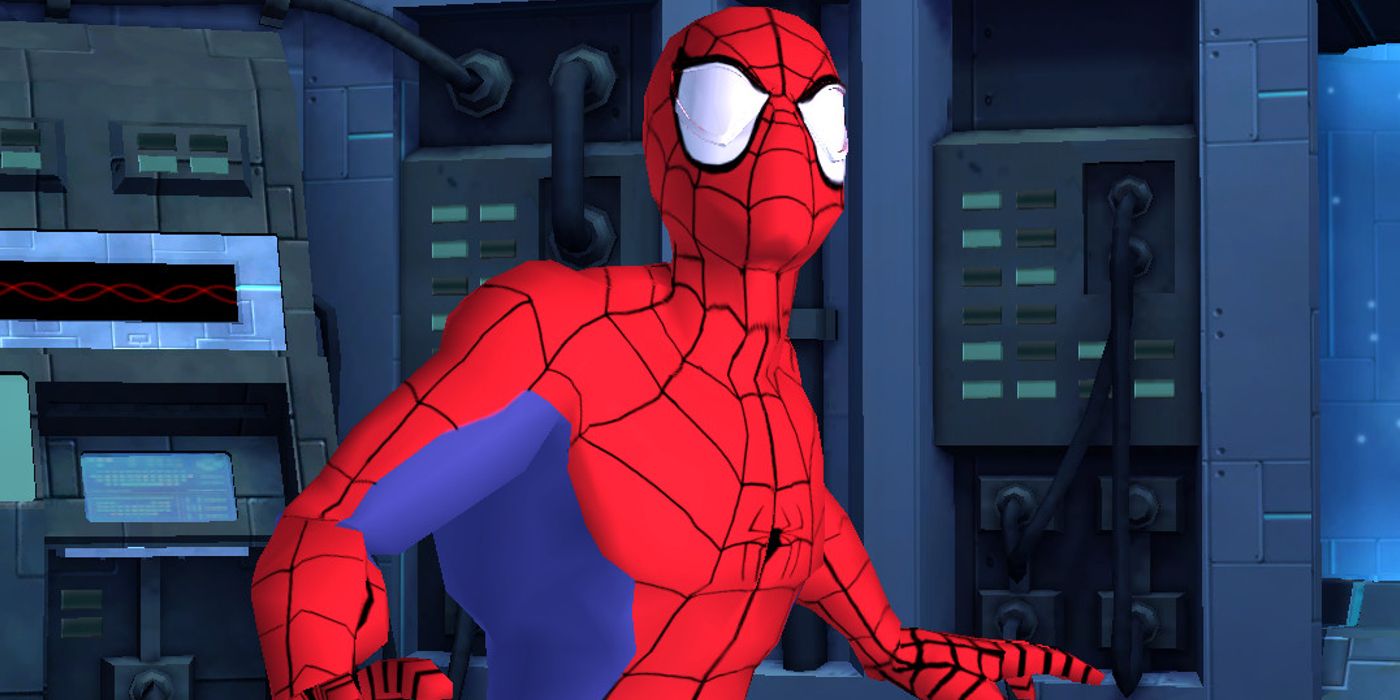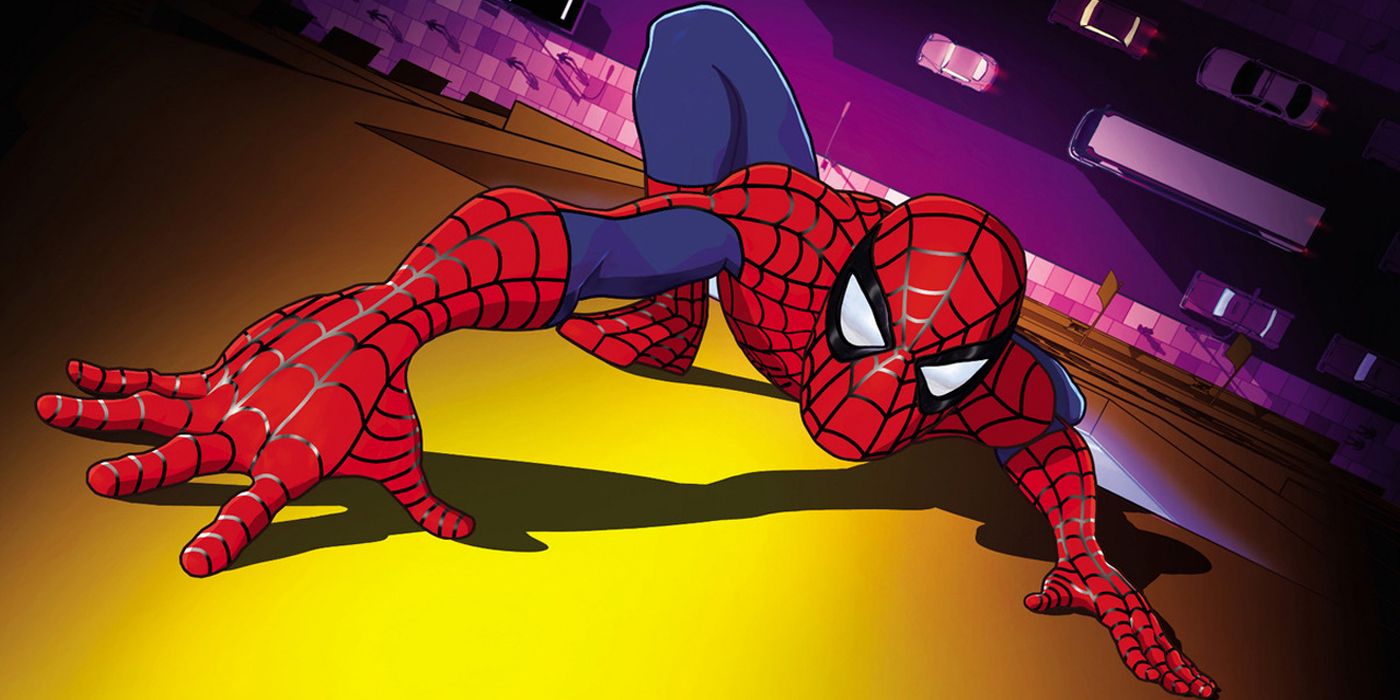In the annals of Spider-Man animated shows, there is one turn-of-the-century standout that isn't talked about enough. Spider-Man: The New Animated Series was a very weird show ahead of its time in a lot of ways.
Sony Pictures Television was the producer, a first at the time. Originally conceived as an adaptation of Brian Michael Bendis' Ultimate Spider-Man comic series, it soon morphed into an animated continuation of Spider-Man (2002). Peter, voiced by Neil Patrick Harris, and Harry Osborn, voiced by Ian Ziering, room together at Empire State University. Lisa Loeb-voiced Mary Jane also attended, eager to start a relationship with a reluctant Peter. The series aired for only a single season, and the script for Spider-Man 2 immediately undid any continuity. Still, Sony tried to start its Spider-Verse early, even including a reference to Fox's X-Men franchise in an episode. It was the first animated series to not treat Spider-Man like kid stuff. And the technology used to create it became what Marvel Studios used to make What If…?
Spider-Man: The New Animated Series Was the First US Animated Series Using Cel Shading
Cel shading, or animating something in three dimensions and then rendering it look more two-dimensional, was first used on Disney's The Great Mouse Detective back in 1986. A handful of French and Canadian shows for little kids and 2000's The Adventures of Rocky and Bullwinkle followed. Still, Mainframe Enterprises, basically had to create the tech to make the show from scratch. It created a program to animate the characters and automatically populate New York with fully rendered background extras. From today's perspective, the series has a "PlayStation 2" quality, specifically character movement and physics. Visually, it's only really noticeable when characters are wearing skin-tight clothes, like the kind Spider-Man prefers.
The addition of the Raimi-like webbing on the suit instead of simply black lines also muddled Spider-Man's profile. Still, the freedom of this animation method allowed the show to give fans views of the Web Head swinging around that they'd never seen before. There are also some legitimately impressive and beautiful moments. When the characters are unmasked and in regular clothes, the animation would hold up were the clothing not excruciatingly dated to the very early 2000s. There are even shades of the oddly disproportionate character design used on The Clone Wars, itself a groundbreaking CGI cartoon. Still, Spider-Man: The New Animated Series predated George Lucas' Star Wars prequel follow-up by five years.
Today, the visuals are painfully dated and, simultaneously, captivating. If Sony Pictures wants to meet fans halfway for Amazing Spider-Man 3, an animated series a lot like this seems like the way to do it. It wouldn't be the first time that the franchise looked to this cartoon for inspiration.
Spider-Man: The New Animated Series Told Mature Comic Book Stories
Inexplicably, this series aired on MTV, which may explain why it never found a large audience and died after a single season. Still, this meant that the show had to appeal to teenagers and young adults rather than being suitable for seven-year-olds. Characters drank, had sex and Spider-Man beat people's asses. There were no tossing fools and webbing them up like in the TV-Y7 fare. Yet, the stories were quintessential Spider-Man tales. Spidey always made the right choices, but he wrestled with doubt. The goodies and the baddies weren't always so easy to identify. One episode featured a woman suffering some kind of mental injury from her homemade "ESP helmet." This makes her murderously in love with Spidey. She ends up paralyzed, and that's not even the show's darkest story.
In Episode 8, "The Party," recurring Spider-Friend Max Dillon, voiced by Ethan Embry, meets his destiny. He's kidnapped by frat bros and almost killed. Then told he's being initiated into the frat but instead gets shot with paintballs. He becomes Electro, and then straight-up murders his bully. Both this show and The Amazing Spider-Man 2 took "Electro is a blue science experiment gone wrong" from the Ultimate comics. However, the film dumped Bendis' origin, instead making Jamie Foxx's Max Dillon a sad sack who thinks he's pals with Spider-Man. He then gets bullied into becoming a supervillain.
Spider-Man: The New Animated Series is strange in every way. It looks weird, and the stories seem incongruous with a kids' Spidey cartoon. The theme song is either blissfully or painfully reminiscent of the era. Yet, it remains eminently watchable. Also, it shows the potential that Spider-Man has on TV. Done this well 20 years ago? Imagine what could be accomplished today.
Spider-Man: The New Animated Series will stream in October on Disney+.


